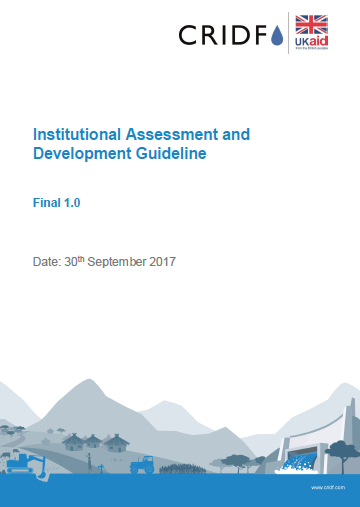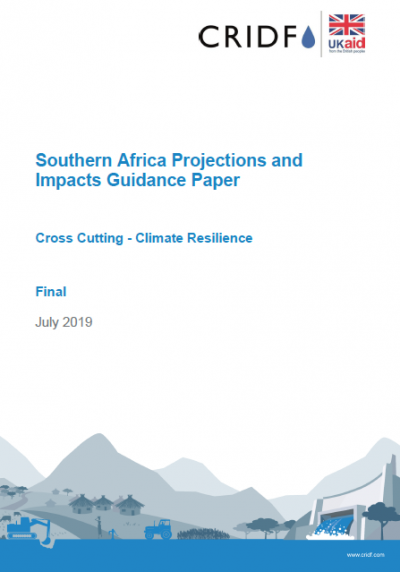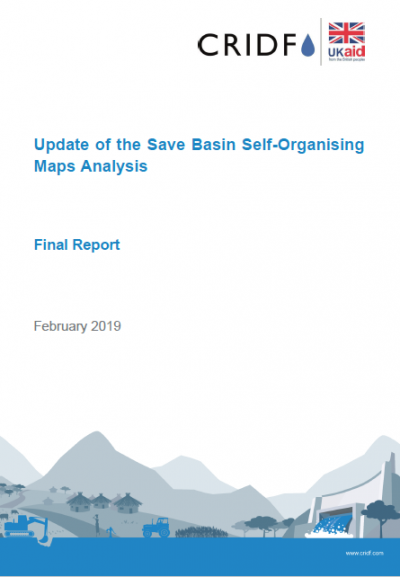All documents
This guideline document outlines an approach and methodology to undertake effective institutional assessments. Institutional assessments are critical and help mitigate risk – since a lack of institutional capacity is arguably the single biggest reason for the failure of infrastructural projects. This guide is primarily designed for practitioners…
Year: 2017
Produced by: CRIDF
File size: 2.62 MB
This paper presents a consistent set of climate change projections for Southern Africa and identifies expected on-the-ground impacts. It is designed to complement the Climate Change Risk Assessment protocol. The projections included in the paper are derived from a literature review conducted by climate scientists located in both South Africa and the…
Year: 2019
Produced by: CRIDF
File size: 1.22 MB
This guide provides an overarching framework to develop concept notes – a critical step towards appealing to donor interests and needs and mobilising finance for livelihood projects. It outlines key considerations, the role of regional and national entities, and the type and depth of information typically required at the concept stage. The guide…
Year: 2018
Produced by: CRIDF
File size: 580 KB
This guide provides a step-by-step process for carrying out environmental assessments at all stages of a project’s implementation. It also provides a checklist of important issues that need to be considered and factors in differences in the environmental laws and assessment procedures of Southern African countries where CRIDF is working. It is intended…
Year: 2017
Produced by: CRIDF
File size: 928 KB
This report captures the discussions of a Livelihoods Hotspot Mapping Stakeholder Inception Workshop which identified the distinct hazards and vulnerabilities of five distinct units within the Cubango-Okavango River Basin. The workshop was an initial step towards identifying potential technologies and interventions that development partners can…
Year: 2018
Produced by: CRIDF
File size: 2.15 MB
CRIDF was requested by the Zambezi River Basin Commission to undertake a basin-wide vulnerability hotspot assessment as the basis for identifying priority areas of intervention. This document summarises the discussions of National Stakeholder Committees which were subsequently formed to review and analyse the hotspots – and identify vulnerabilities,…
Year: 2019
Produced by: CRIDF
File size: 1.76 MB
This document analyses projected annual climate changes within four domains of the Limpopo River Basin using self-organising maps (SOMs). Analysis suggests that temperatures will increase throughout the century. In all domains there are indications that annual rainfall distribution will become more spread, mainly through increases in the frequency…
Year: 2019
Produced by: CRIDF
File size: 17 MB
This document analyses projected climate changes within four domains of the Orange-Senqu River Basin using self-organising maps. Analysis suggests that temperatures will increase throughout the century in all domains. Within the two eastern domains annual rainfall distribution is expected to become more widespread, with increases in extended wetter…
Year: 2019
Produced by: CRIDF
File size: 15.8 MB
This update document complements an earlier report entitled ‘Southern Africa Climate Projections.’ It presents an assessment of extreme scenarios based on the original self-organising maps (soms); inter-annual variability statistics based on scenarios derived from soms analysis; and an assessment of adjustments under climate change in regions within…
Year: 2019
Produced by: CRIDF
File size: 3.55 MB
The Upper Komati Domain covers most of the upper parts of the basins within South Africa west of the border with Swaziland. This assessment provides an analysis of expected temperature and rainfall changes in the Upper Komati Domain using Self-Organised Maps (SOMs). An analysis is provided for each Representative Concentration Pathway (RCP) and each som…
Year: 2019
Produced by: CRIDF
File size: 1.52 MB











